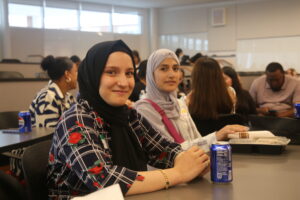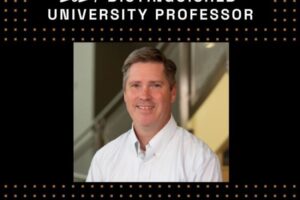Maryland Sex Trafficking Case Shows Typical Red Flags for Exploitation, Experts Say

Above, SAFE Center Founder and Director, Susan Esserman, speaks at an event. Below, Esserman, a renowned activist and expert, speaks on the pressing statewide and countrywide issue of human trafficking.
Published in the Baltimore Sun | June 5, 2024
Vulnerable victims, an organization that allegedly moved across Maryland, and the use of drugs as a tool of coercion are all common signs of sex trafficking that appeared in new allegations against a Baltimore woman charged with forcing nearly a dozen women to perform commercial sex work, experts say.
The case spotlights some of the ways that Maryland is “uniquely situated” as a potential hot spot for trafficking, according to the Maryland Human Trafficking Task Force, though hard data on the crime is difficult to pinpoint because it’s so widely underreported.
Some commonalities are clear, though, according to people who work with survivors. Traffickers seek out victims who are easy to coerce, perhaps because they are struggling with substance abuse, ran away from home or have an uncertain immigration status, said Lisae C. Jordan, the executive director of the Maryland Coalition Against Sexual Assault.
“We see a lot of exploitation of people who have any kind of vulnerability,” Jordan said. “Anytime you have a vulnerable person, you have a higher risk of trafficking.”
The new criminal case announced this week fits that profile. Investigators identified 11 victims and one woman who appears to have been both trafficked herself and a participant in the trafficking organization, according to charging documents.
The organization’s alleged leader, Kenika D. Leach, 33, is the only person currently facing charges. She has been indicted on 135 charges stemming from the ring, which police say went by the name “Pussy Kat Klub” and recruited women in Hagerstown and forced them to perform sex work in hotels across Maryland.
Victims in the case told police they were struggling with addiction, which allowed Leach to control them by “starving” them of drugs and offering daily rations in exchange for coerced sex work, according to charging documents. Police noted that one woman was “particularly vulnerable” because she grew up in the foster care system.
The locations identified in the charging documents also fit the patterns that experts often see in sex trafficking cases. The hotels where the women stayed were often near BWI Marshall Airport or the sports stadiums in Baltimore, investigators wrote. Transportation hubs, such as interstate highway corridors and international airports, can facilitate trafficking, said Susan Esserman, the founder and director of the University of Maryland SAFE Center for Human Trafficking Survivors.
“It seems to be the most concentrated in metropolitan areas where there are multiple transportation networks and influxes of people, but as this case shows, trafficking can happen in less populated areas and in remote areas,” Esserman said.
Victims in the case told police they were recruited in Hagerstown and then transported to the Baltimore area. Several were passed off to Leach to be trafficked after Leach’s alleged co-conspirators started romantic relationships with them, police wrote.
That’s another common feature of sex trafficking, Esserman said. Traffickers can groom victims who are homeless or neglected by fulfilling their basic needs, providing shelter, financial support or “love.” Recruitment also can happen online through social media, Esserman said.
The alleged Maryland trafficking ring came to law enforcement’s attention when one of the women sought treatment at a Baltimore hospital for pregnancy complications, according to the application for a statement of charges against Leach.
A forensic nurse at Mercy Medical Center alerted Baltimore police officers and noted that a man identified as “Uncle Joseph” had accompanied the woman and inquired about her repeatedly, investigators wrote. The nurse was part of a specialized team that had been trained to recognize signs of sex trafficking, according to the charging documents.
A controlling person accompanying a patient is another sign of trafficking that medical personnel can identify when a victim comes in for medical care, said Ashley McAree, a forensic nurse and human trafficking liaison with the Sexual Assault Forensic Examination program at Greater Baltimore Medical Center in Towson. Hospitals can be an important place for victims to get help if medical staff know the signs of trafficking.
“The number one thing for hospitals is education, awareness, offering training to your staff,” McAree said.
The notification at Mercy Medical Center helped launch a two-year, multi-agency investigation that led to the charges against Leach, who is being held without bond.
It’s not clear how prevalent the problem of sex trafficking is in Maryland, though, because so little data is available.
“Human trafficking is probably one of the most underreported crimes that we face,” McAree said.
There are a few data points, however. The National Human Trafficking Hotline has received about 6,000 “signals,” a term that refers to hotline calls, online reports and other forms of reporting, in Maryland since its inception in 2007. The hotline has identified 1,533 cases of human trafficking involving nearly 3,000 victims in Maryland during that period, according to its website.
Human trafficking is a broad term that encompasses both sex trafficking and other forms of exploitation like forced labor.
Esserman said that the SAFE Center, which primarily serves Prince George’s and Montgomery counties, has assisted more than 400 sex and labor trafficking survivors and their family members in the eight years since its founding.
And even as more organizations are working together to offer help for trafficking survivors, she said, the demand for services still exceeds the resources that are available. Affordable housing, in particular, is in short supply, which can make it difficult to find a stable place to live for survivors who have recently left their trafficking situation.
“This is a statewide and countrywide issue,” Esserman said.



